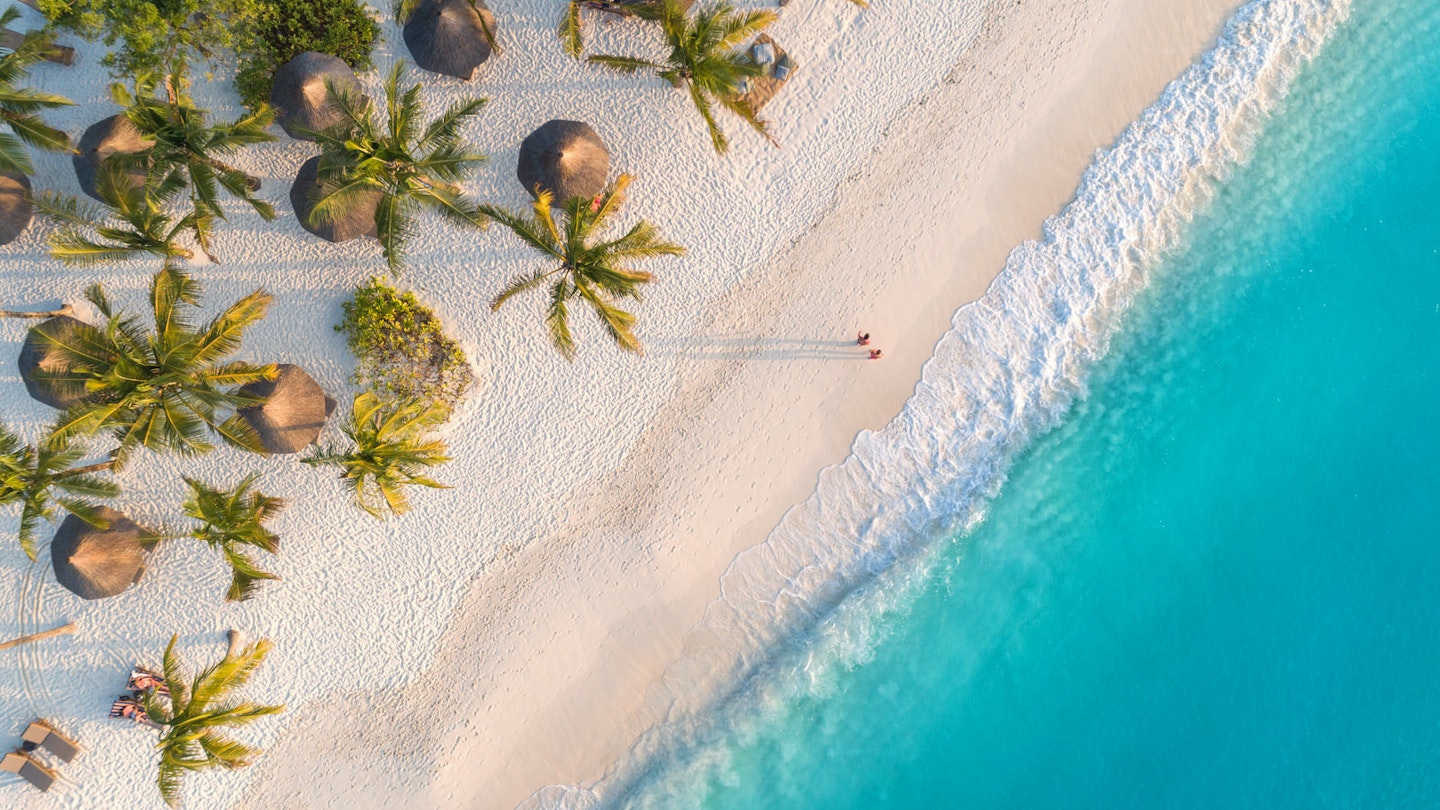Zanzibar: A Tropical Paradise Awaits
The allure of Zanzibar is timeless. White sands and turquoise waters ring the island, while African, Indian, Arabic, and Persian influences intertwine in Stone Town to form a rich cultural backdrop. This article offers essential tips for first-time visitors to Tanzania’s most famous island.
1. Beaches
Zanzibar’s beaches are justifiably famous, featuring fine white sands alongside clear turquoise waters. Traditional Arabic dhows sail into the dawn, silhouetted against pastel-tinted skies while coconut palms sway gently in the breeze. Whether visiting post-safari or as a stand-alone tropical destination, the beaches on Zanzibar’s east coast and northern tip are perfect for relaxation. Each beach boasts its unique personality:
- Paje: Known for its kitesurfing.
- Matemwe: Offers a chilled vibe with powdery sands and local village glimpses.
- Nungwi: Where tradition meets contemporary life, featuring fishing boats and bustling beach life.
- Kendwa: Similar to Nungwi but with a more spread-out layout, making it swimmable around the clock.
- Pongwe: A quieter beach, ideal for escaping crowds.
- Jambiani: A stunning spot for insights into local culture, featuring picturesque waters and traditional homes.
All beaches are within a one to two-hour drive from Stone Town. Transport options are plentiful and affordable, whether through private minivans or public dalla-dallas, making day trips from the beach to explore Stone Town entirely feasible.

2. Stone Town
Zanzibar Town, the island’s main settlement, is essentially the heart and soul of the island, particularly through its historic old Stone Town. This area immerses visitors in the island’s vibrant rhythms. Begin your exploration at Forodhani Gardens, where locals gather in the early evening to watch the sun set. Young men jump from the seawall into the harbour while children play nearby, creating a vivid scene of local life.
Opposite the gardens, the impressive Old Fort stands, harking back to when Omani Arabs took control of Zanzibar from the Portuguese in 1698. The adjacent House of Wonders is renowned for its massive carved doors. As you wander through Stone Town’s maze of narrow alleyways, enjoy stops at the Palace Museum, showcasing Omani sultanate displays, and the beautiful Aga Khan and Ijumaa mosques. Other sites include the Hamamni Persian Baths, the island’s first public baths, and the Anglican Cathedral, which features a moving Slave Memorial. Conclude your tour at the lively Darajani Market, where a colourful assortment of goods awaits.
3. Jozani-Chwaka National Park
Jozani is the largest indigenous forest in Zanzibar, showcasing the vegetation that once covered much of the island. It is particularly famous for the Zanzibar red colobus monkeys, an endangered species found exclusively here. Visitors might also spot other monkey species, duikers, and over 40 species of birds. Jozani can easily be visited as a day trip from Zanzibar Town or while traveling between the town and the beaches; it’s recommended to allow a couple of hours for a forest trail walk and to immerse in nature.
4. Spice Tours
In days gone by, spices dominated the economy of the Zanzibar Archipelago. Although this trade has declined, a spice tour through the plantations that dot the island remains an enjoyable and educational experience. These tours allow visitors to see, taste, and smell a variety of spices, herbs, and fruits that grow in Zanzibar, including cinnamon, cloves, vanilla, nutmeg, jackfruit, and lemongrass. Tours can be organized through hotels or local tour operators and typically include lunch. Some also feature visits to local schools or cooperatives.

5. Diving and Snorkelling
The waters off northeastern Zanzibar provide excellent diving opportunities, with beautiful coral reefs, wall and drift dives, and a diverse array of fish. Additionally, rewarding diving can be experienced off-shore from Stone Town, where both soft and hard corals, as well as wreck dives, abound. Numerous dive companies operate in major beach destinations including Nungwi, Kendwa, Matemwe, Paje, and Stone Town, promising great visibility and average water temperatures of about 27°C.
6. Make It Happen
Flights from Dar es Salaam to Zanzibar are frequent and take about 30 minutes, with prices ranging between US$45 and US$80 one-way. Alternatively, daily ferry connections run to and from the mainland, taking about two hours at a cost of US$35 one-way. Upon arrival, brief immigration formalities are standard. Regardless of your entry method, taking advantage of advance-arranged pick-up services provided by most hotels is recommended for added convenience.
Zanzibar boasts a wide array of accommodation options. Budget travelers may choose options such as Jambo Guest House or Lost & Found. Mid-range accommodations include Beyt al-Salaam and Tembo House Hotel, while travelers seeking luxury can consider Kisiwa House or Emerson Spice.
For beach accommodations, consider Demani Lodge in Paje or Seles Bungalows in Matemwe for budget options. Mid-range stays can be found at Mnarani Beach Cottages in Nungwi or Bellevue Guesthouse near Paje. For high-end accommodation, consider Pongwe Beach Hotel or Matemwe Lodge.





